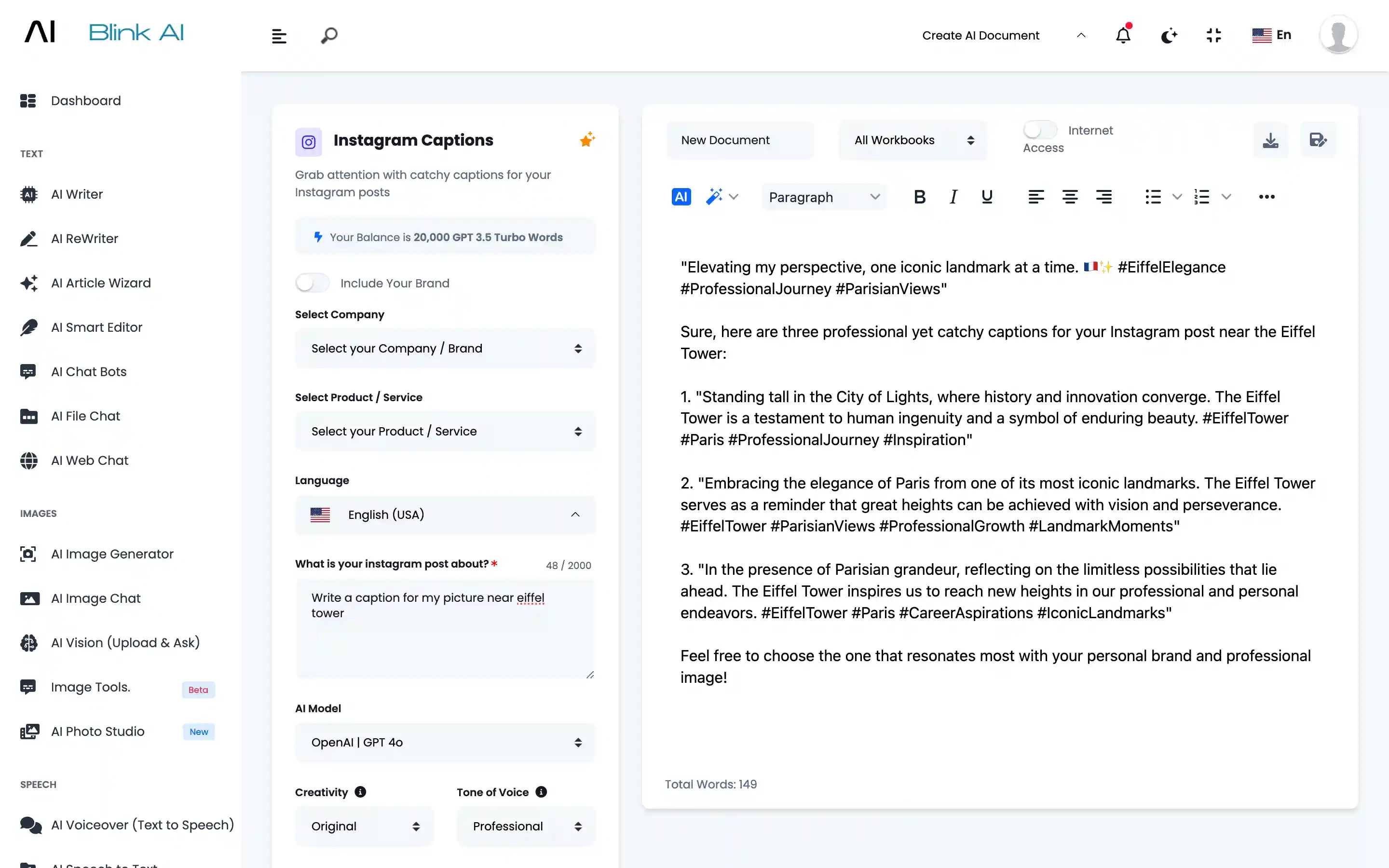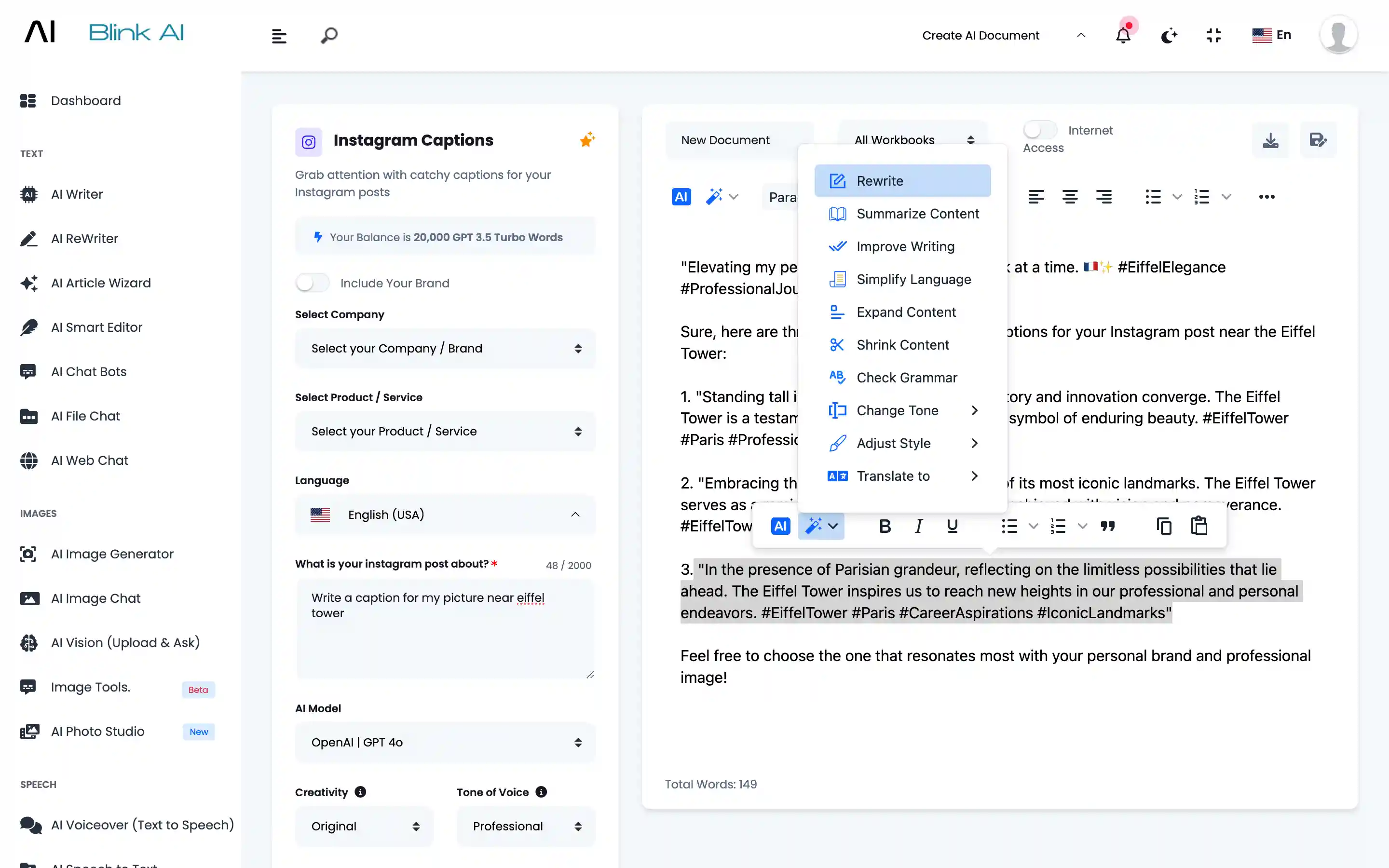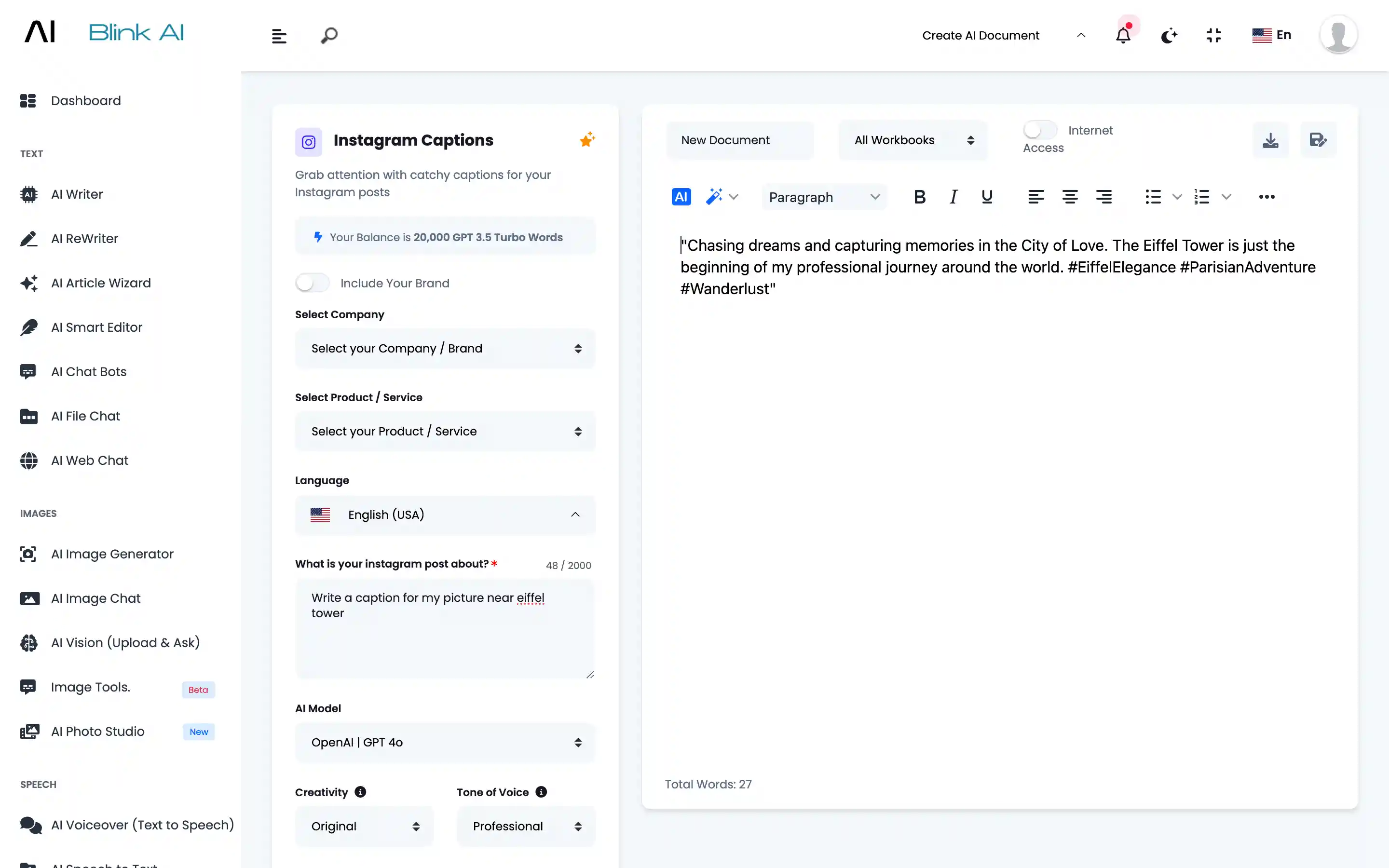Meet, BlinkAI – AI Content Generator: Text, Image, Video, Voice & Code
Text Extender
One platform to generate all AI contents





AI Text Extender
Extend your sentences with more description and additional information
About Text Extender
Extending your sentences with more description and additional information is a powerful way to enhance the clarity, richness, and engagement of your writing. This technique can make your content more informative and appealing to readers, improving their overall experience. Here’s a comprehensive guide on how to effectively extend your sentences: Clarity: Adding more details can clarify your ideas, making it easier for readers to understand your message. Engagement: Descriptive and informative sentences can capture the reader’s attention and keep them engaged. Depth: Extended sentences can provide more context and depth, offering a richer and more comprehensive understanding of the topic. Visual Descriptions: Describe what something looks like, including colors, shapes, and sizes. For example, “The garden was full of vibrant, blooming flowers in every shade of the rainbow, creating a kaleidoscope of color.” Sound Descriptions: Include sounds to bring your sentences to life. For example, “The leaves rustled softly in the gentle breeze, creating a soothing, whispering sound.” Touch Descriptions: Describe textures and sensations. For example, “The velvet curtain felt soft and luxurious under her fingertips, a stark contrast to the rough, worn wood of the old chair.” Historical Context: Provide historical background to give readers a better understanding. For example, “Built in the early 19th century, the mansion had witnessed generations of the family’s history, each room filled with antique furniture and heirlooms.” Cultural Context: Include cultural references to enrich your narrative. For example, “In Japanese culture, the cherry blossom symbolizes the ephemeral nature of life, its brief bloom a reminder of the beauty and fragility of existence.” Similes: Use similes to draw comparisons. For example, “Her smile was as bright as the morning sun, warming everyone around her.” Metaphors: Use metaphors to create vivid imagery. For example, “The city was a bustling beehive, with people swarming in every direction.” Emotional Descriptions: Describe the emotions of the characters or subjects. For example, “He felt a surge of joy and relief, his heart swelling with happiness as he received the long-awaited news.” Reactions: Describe how people react to situations. For example, “The audience erupted in applause, their cheers echoing through the hall as the performer took a bow.” Examples and Anecdotes: Provide specific examples to illustrate your points. For example, “Many writers struggle with writer’s block; J.K. Rowling famously overcame it by writing in a coffee shop every day.” Case Studies: Use case studies to provide concrete evidence. For example, “In a study conducted by Harvard University, it was found that students who slept eight hours a night performed significantly better on exams.” Elaborate on Ideas: Take a key point and delve deeper. For example, “Renewable energy sources, such as solar and wind power, not only reduce greenhouse gas emissions but also create sustainable jobs and promote energy independence.” Provide Additional Information: Add extra details to support your points. For example, “The new software update includes several new features, such as enhanced security protocols, user-friendly interfaces, and customizable settings.” Complex Sentences: Combine multiple ideas in one sentence using conjunctions. For example, “The artist, who had traveled the world and studied various techniques, brought a unique perspective to her work, blending traditional methods with modern styles.” Compound Sentences: Link related ideas together. For example, “The sun set over the horizon, and the sky turned a brilliant shade of orange and pink.” Practice Exercises: Regularly practice descriptive writing exercises. For example, describe a scene in detail, focusing on all five senses. Read and Analyze: Read descriptive writing by other authors and analyze how they extend their sentences. Note their use of sensory details, comparisons, and background information. Original Sentence: “The beach was beautiful.” Extended Sentence: “The beach was stunning, with its pristine white sand stretching for miles, the turquoise waves gently lapping at the shore, and the golden sun casting a warm glow over the entire scene.” Original Sentence: “She was happy.” Extended Sentence: “She felt a profound sense of happiness, her heart swelling with joy as she watched her children play in the garden, their laughter ringing out like sweet music.” Original Sentence: “The city was busy.” Extended Sentence: “The city was alive with activity, the streets bustling with people hurrying to and fro, the air filled with the sounds of honking cars, chatter, and the occasional street musician playing a lively tune.” Extending your sentences with more description and additional information can greatly enhance the quality of your writing. By incorporating sensory details, context, comparisons, emotions, and varied sentence structures, you can create rich, engaging content that captivates your readers and provides them with a deeper understanding of your subject matter. Regular practice and analysis of descriptive writing will further improve your ability to craft extended sentences effectively.1. Understand the Purpose
2. Use Sensory Details
3. Add Context and Background Information
4. Use Comparisons and Analogies
5. Include Emotions and Reactions
6. Incorporate Specific Examples
7. Expand on Key Points
8. Use Varied Sentence Structures
9. Practice Descriptive Writing
Example Transformations
Conclusion
Steps for AI Writing
Start Writing Content in 3 Easy Steps
1
Step 1
AI Writer Section
Go to AI Writer section and select a template
2
Step 2
Details
Provide brief details about your requirement
3
Step 3
Generate
Generate, amend and save content
Discover AI Writer
How To Use Blink AI's AI Writer for Content Creation
Go to AI Writer Section
Choose from 70+ AI Writing Templates or Create your Own Template
Describe
You can provide details like what is the exact requirement. How many outputs you want. Which AI model you want to use.
Generate
Content will be generated based on your input.
Amend
Select the content you want to amend. Click on the Magic Wand to amend Generated Content.
Fresh Output
Fresh output will be generated. You can save it in Workbooks.




